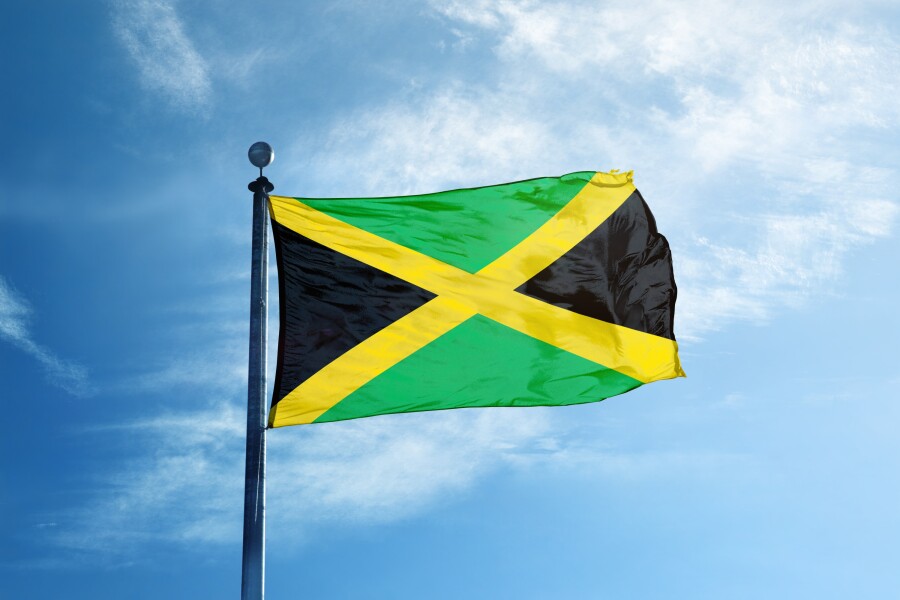The most powerful storm to ever hit Jamaica and one of the strongest ever in the Atlantic Basin, Hurricane Melissa earlier this week tore a catastrophic path across the western portion of the 146-mile-long island and was responsible for at least 30 deaths in Jamaica and elsewhere in the Caribbean, according to CNN.
The Weather Channel reported the Category 5 storm ranked among the most intense Atlantic hurricanes of all time when it made landfall on Jamaica’s southwest coast near New Hope on Tuesday afternoon. As a clearer picture of the damage continues to emerge, images and videos being posted on social media and from news outlets are staggering, showing widespread destruction in communities around St. Elizabeth Parish, at some of the island’s best-known resorts on the southwestern end of the island in Westmoreland Parish, as well as on the north coast and beyond.
“The impact of Hurricane Melissa on Jamaica has been significant, and the road to recovery, especially within our communities, will take time,” Heidi Clarke, executive director of the Sandals Foundation, the nonprofit arm of Sandals and Beaches Resorts, told Afar in an email.
It’s still too early to get the full picture of the long-term impacts on lives and livelihoods from the historic storm’s brutal blow. But as more information emerges each day, here’s what to know about the affected areas in Melissa’s path.
What areas were hardest hit by Hurricane Melissa?
Jamaica bore the full brunt of Hurricane Melissa when the Category 5 storm made landfall near New Hope and Black River in St. Elizabeth Parish after undergoing extremely rapid intensification fueled by abnormally hot sea water, conditions likely fueled by climate change, according to a report from the independent research group Climate Central. The historic storm has reduced historic buildings to rubble and blew off rooftops when it came ashore at 185 miles per hour, the New York Times reported.
Coastal communities in southwest Jamaica took the most punishing blows from the storm, with catastrophic flooding and wind damage. Melissa’s effects were widespread elsewhere on the island, including in the popular resort region of Montego Bay on Jamaica’s north coast. Conditions and casualties are still being assessed and power outages remain widespread.
The winds and rainfall from the storm impacted Haiti as well, where in the western part of the country, 10 children were among 20 people killed in Petit-Goâve after the La Digue River suddenly flooded, the Haitian Times reported. Eastern Cuba suffered significant damage, too, when Melissa came ashore as a Category 3 storm, with President Miguel Díaz-Canel saying the hurricane had caused “considerable damage,” while not providing a casualty figure, according to the BBC.
Melissa continued north on its path through the southeastern Bahamas on Wednesday and is expected to pass by Bermuda late on Thursday as a Category 1 or 2 storm, with hurricane conditions predicted and coastal flooding possible, per the Weather Channel.
How have travel and transportation been affected?
As of Thursday, October 30, Ian Fleming International Airport in Boscobel and the Norman Manley International Airport in Kingston have reopened to commercial passenger flights. Sangster International Airport (MBJ) in Montego Bay, Jamaica’s biggest and busiest airport, remains closed as of Thursday, with no word yet on when it will reopen. American Airlines resumed operations in Kingston, Jamaica; Holguin, Cuba; and Providenciales, Turks and Caicos on October 30.
As the storm approached, cruise lines adjusted itineraries scheduled to sail to the eastern and central Caribbean, including ports of call in Montego Bay and Ocho Rios, Jamaica’s popular cruise ports. Cruise company Carnival Corporation has canceled its current calls in Montego Bay and is rerouting its ships to ports in Belize and the Bahamas, according to its most recent update. Norwegian Cruise Line’s Norwegian Prima will also bypass Montego Bay in favor of calling into Nassau in the Bahamas on an upcoming itinerary. Travelers with cruise sailings with scheduled port calls in Jamaica in the coming weeks and months should stay in touch with their cruise line for further information.
Real-time updates for travelers with upcoming plans for visiting the island are available on Visit Jamaica’s homepage.
How can travelers help?
International organizations and local fund-raising groups where the Jamaican diaspora resides abroad are among the groups jumping in to assist victims of Hurricane Melissa. For travelers wishing to support recovery efforts, these are some of the groups currently working on the ground to help the people and communities in areas affected by the storm.
American Friends of Jamaica
Donations will be matched dollar-to-dollar as part of a $1 million fund to support critical Hurricane Melissa relief and recovery efforts spearheaded by this long-standing nonprofit that’s been supporting Jamaican charitable organizations since 1982.
World Central Kitchen
Chef José Andrés’s humanitarian organization World Central Kitchen is already on the ground working with Jamaican partners to provide meals for affected communities on the island.
Support Jamaica
The Government of Jamaica’s official Support Jamaica website is mobilizing resources from around the world for on-the-ground efforts providing food, shelter, and medical aid to people in need on the island.
Global Empowerment Mission
Some 97 percent of all donations to this Doral, Florida-based not-for-profit go directly toward providing urgent relief for rebuilding communities. Ten million dollars is already committed for Hurricane Melissa efforts that will mobilize cargo planes and relief containers of aid to stricken areas.
The Sandals Foundation
The nonprofit arm of Sandals and Beaches Resorts has activated its Relief Mission with 100 percent of every dollar donated going directly to the organization’s immediate emergency response efforts focused on providing vital resources such as food, water, hygiene kits, and building materials to those impacted by Hurricane Melissa.
International Medical Corps
The Los Angeles–based nonprofit provides healthcare services and training in disaster and conflict areas around the world; it is working with Jamaica’s Ministry of Health and other local partners to assess conditions and distribute supplies.
International Federation of Red Cross and Red Crescent Societies
The world’s largest humanitarian network is supporting the Jamaican Red Cross to provide emergency shelter, food, clean water, and cash assistance. It has launched an emergency appeal for $23 million to assist what the organization estimates is 180,000 people affected by Hurricane Melissa in Jamaica over the next 24 months.








